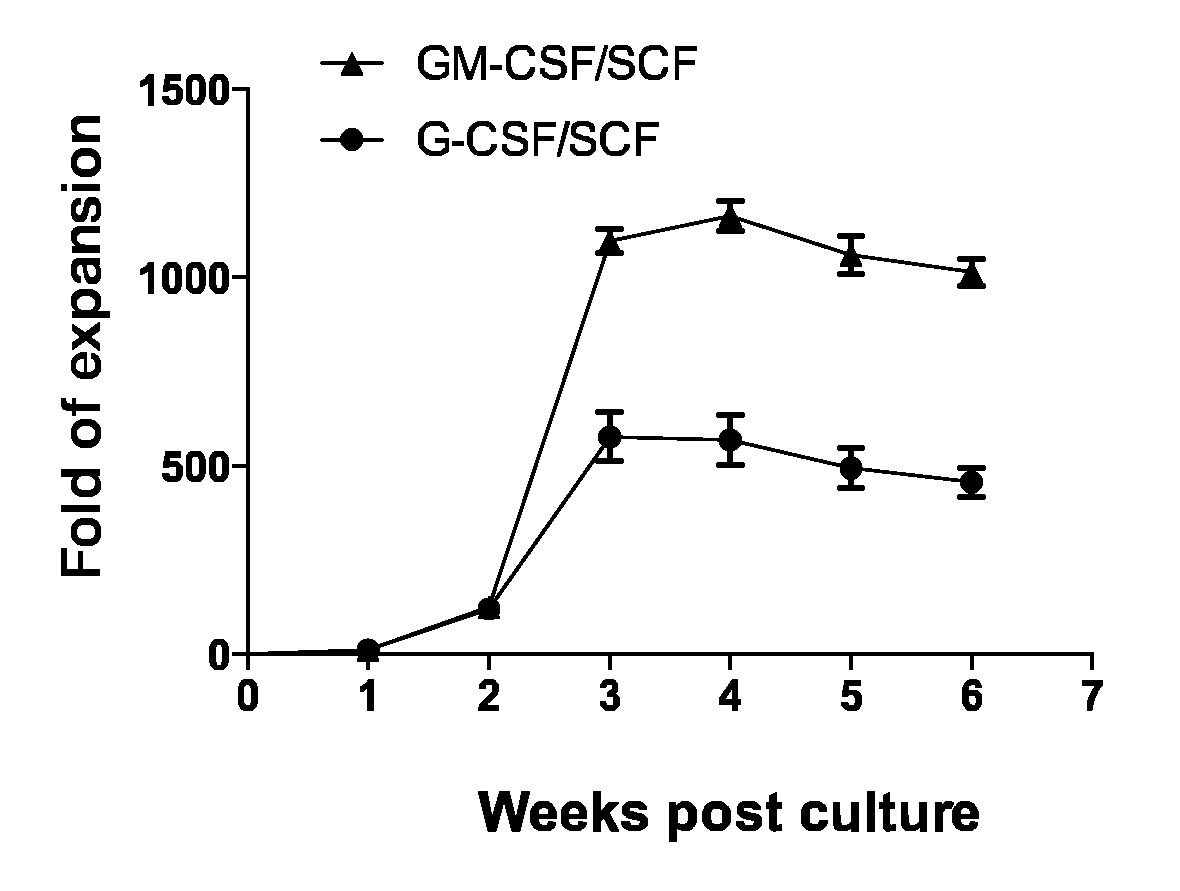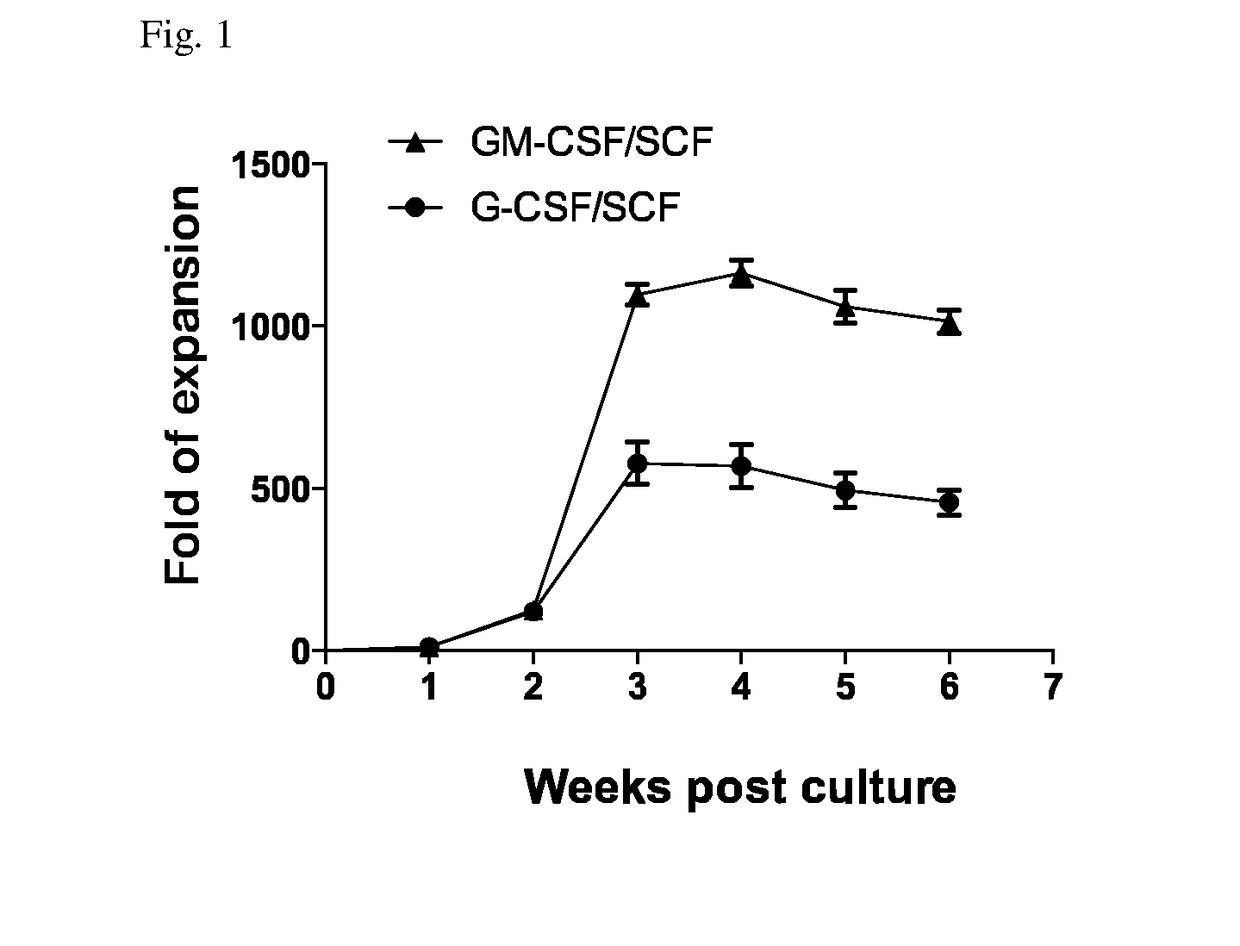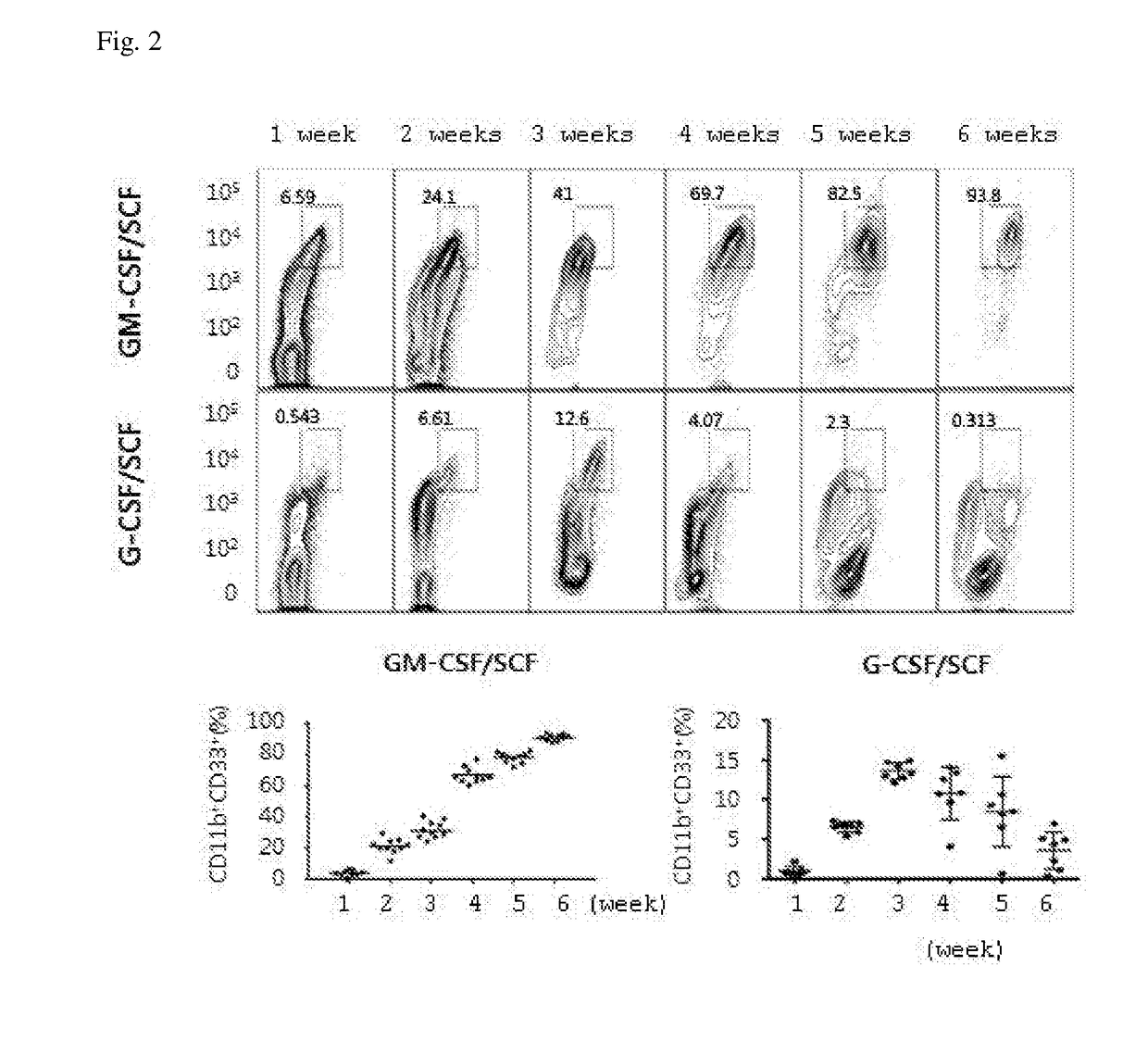Method for Inducing Differentiation of Myeloid-Derived Suppressor Cells from Cord - Blood CD34 Positive Cells and Proliferating Same, and use of Myeloid-Derived
a technology of suppressor cells and cord blood, which is applied in the field of inducing differentiation and proliferation of myeloid-derived suppressor cells from cord blood cd34 positive cells, and using myeloid-derived. it can solve the problems of accumulation of human-derived mdscs, affecting the survival rate of patients, and affecting the quality of life of patients
- Summary
- Abstract
- Description
- Claims
- Application Information
AI Technical Summary
Benefits of technology
Problems solved by technology
Method used
Image
Examples
example
Example 1: Establishment of Stable Amplification of Myeloid-Derived Suppressor Cells by a Cytokine Combination of GM-CSF and SCF in Cord Blood-Derived CD34+ Cells
[0059]CD34+ cells were isolated from cord blood derived from different subjects (humans) by using the MACS method using an antibody against human anti-CD34 (Miltenyi Biotec, Germany) Cord blood-derived mononuclear cells were washed with a MACS buffer. Both an FcR-blocking solution and human CD34 MicroBead (CD34 antibody-bound microbead) were added in an amount of 100 mL per 1×108 cells and were refrigerated for 30 minutes. For separation into CD34-positive cells and CD34-negative cells, after installing a mini-column in a magnetic body, pre-washing was carried out by perfusing 3 mL of a MACS buffer (0.5% BSA, and 2 mM EDTA in PBS at pH 7.2). After the pre-washing, each sample treated with an antibody was resuspended in 1 mL of a MACS buffer to fill the mini-column, CD34-negative cells to which an antibody was not attached w...
example 8
n of Efficacy of Cord Blood-Derived MDSCs in Xenogeneic Mouse Model
[0086]The efficacy of cord blood-derived MDSCs were determined in a xenogeneic GVHD mouse model. NSG mice which are immunodeficient animals were irradiated at 200 cGY one day before transplantation, and after one day, 1×106 human PBMCs were transplanted in each mouse subject. For the purpose of alleviating graft-versus-host disease (GVHD), 1×106, 2.5×106, and 5×106 cord blood-derived GM-CSF / SCF-induced MDSCs were administered on day 18 and day 24. The weight of the mice was measured once every two days for scoring of graft-versus-host disease, and movements, degrees of back curvature, hair condition, and skin integrity of the mice were observed.
[0087]FIG. 8A shows images of mice on day 35 after transplanting human peripheral blood mononuclear cells. Healthy NSG mice (control group) not subjected to radiation and transplantation of human peripheral blood had an average weight of 22 to 23 g, and mice which were adminis...
PUM
| Property | Measurement | Unit |
|---|---|---|
| concentration | aaaaa | aaaaa |
| concentration | aaaaa | aaaaa |
| pH | aaaaa | aaaaa |
Abstract
Description
Claims
Application Information
 Login to View More
Login to View More - R&D
- Intellectual Property
- Life Sciences
- Materials
- Tech Scout
- Unparalleled Data Quality
- Higher Quality Content
- 60% Fewer Hallucinations
Browse by: Latest US Patents, China's latest patents, Technical Efficacy Thesaurus, Application Domain, Technology Topic, Popular Technical Reports.
© 2025 PatSnap. All rights reserved.Legal|Privacy policy|Modern Slavery Act Transparency Statement|Sitemap|About US| Contact US: help@patsnap.com



